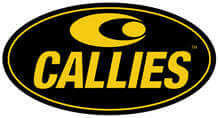
MS Access As A Dev Tool
Access continues to be a highly efficient tool for business database development.
The Best Microsoft Access Database Solutions owner, consultant, and principal programmer is Alison Balter - a recognized expert Microsoft Access consultant. Alison is the author of 15 Microsoft Access training books and videos. She is a frequent guest speaker at MS Access conferences and has developed hundreds of applications for businesses of all types.
We know your business data is important; we listen to your concerns, ask questions, and gather information from all stake holders. We discuss your needs and requirements for your database. We find out what you want, why you need various features so we can obtain as much information as possible. Once we have the information we need, we work with you to design the proper database architecture, plus the dashboards, the questions (queries), forms, and reports you need for an excellent database system.

We also create websites designed for speed to display your data accurately, using ASP.NET technology. Fast, secure, and robust, our ASP.NET web sites and web applications give you true business tool for finding and displaying information dynamically on the web.






Access continues to be a highly efficient tool for business database development.

How to create a Microsoft Access application with some unique tips and tricks.

Your Access developer near me has some great info for you about using Access efficiently.
Call MS Access Solutions at (323)285-0939 for a Free Consultation.
The material below originally appeared in Alison Balter's book Mastering Microsoft Office Access 2007 Development, reprinted here with author's permission. There may be references to "Figures" that are not reprintable and are not used on this page.
Combo boxes allow a user to select from a list of appropriate choices. Access offers several easy ways to add a combo box to a form. If a field's Display Control property has been set to Combo Box, a combo box is automatically added to a form when the field is added. The combo box automatically knows the source of its data as well as all its other important properties.
If a field's Display Control property hasn't been set to Combo Box, the easiest way to add a combo box to a form is to use the Control Wizard. When selected, the Use Control Wizards tool helps you add combo boxes, list boxes, option groups, and subforms to your forms. Although all the properties set by the Combo Box Wizard can be set manually, using the wizard saves both time and energy. If you want the Combo Box Wizard to be launched when you add a combo box to the form, make sure the Control Wizards tool in the Controls group on the Design tab of the ribbon has been clicked (switched on) before you add the combo box.
Select the Combo Box tool on the Design tab of the ribbon and then click and drag to place the combo box on the form. This launches the Combo Box Wizard; its first step is shown in Figure 5.34. You're offered three sources for the combo box's data. Use the first option if your combo box will select the data that's stored in a field, such as the state associated with a particular client. I rarely, if ever, use the second option, which requires that you type the values for the combo box. Populating a combo box this way makes it difficult to maintain. Every time you want to add an entry to the combo box, your application must be modified. The third, and final, option is appropriate when you want the combo box to be used as a tool to search for a specific record. For example, a combo box can be placed in the form's header to display a list of valid customers. After selecting a customer, the user is then moved to the appropriate record. This option is available only when the form is bound to a record source.
In the second step of the Combo Box Wizard, you select a table or query to populate the combo box. For optimal performance, you should select a query. In the third step, you select the fields that appear in your combo box (see Figure 5.35). The combo box being built in the example will be used to select the contact type associated with a particular client. Although the ContactType field will be the only field visible in the combo box, ContactTypeID and ContactType should both be selected because ContactTypeID is a necessary element of the combo box. After a contact type has been selected from the combo box, the ContactTypeID associated with the Contact Type will be stored in the ContactTypeID field of the tblClients table.
This Access programmer information originally appeared in Alison Balter's book Mastering Microsoft Office Access 2007 Development. Reprinted here by author's permission.
When you need a Microsoft Access programmer for your Louisville, Kentucky business, call MS Access Solutions at (323)285-0939. We have 25+ years experience in Microsoft Access programmer solutions. We create Access database applications for all sectors, and that includes hospitals, the U.S. military, government agencies, universities, agriculture, human resources companies, and insurance companies. We can take care of the most advanced as well as complicated Access plus SQL Server database programming for your business as well as smaller projects, like fixing damaged Access database forms, MS Access reports, Access macros, and VBA code.
Get more information about MS Access Solutions programming services on the Microsoft Access Programmer Baton Rouge, Louisiana web page.

